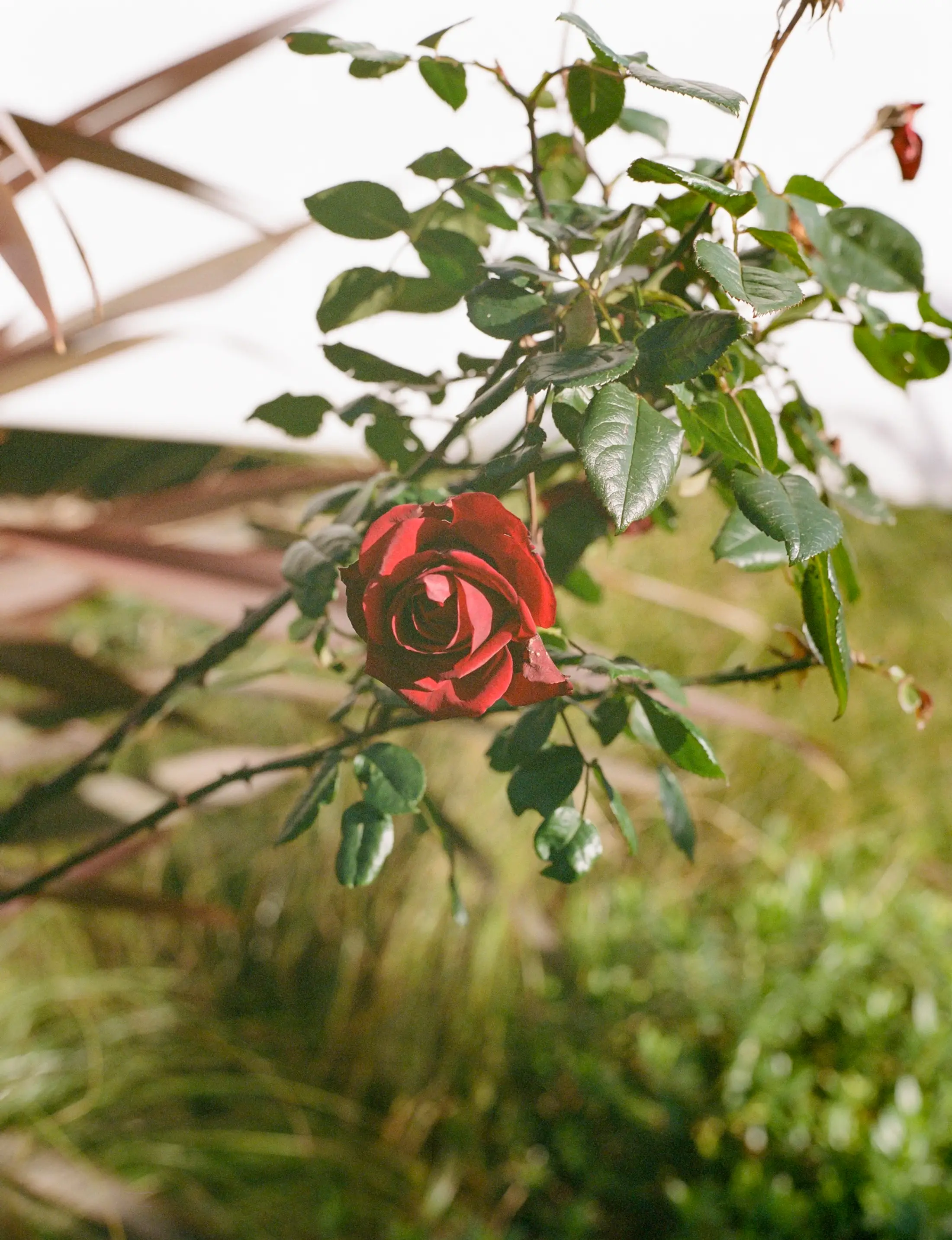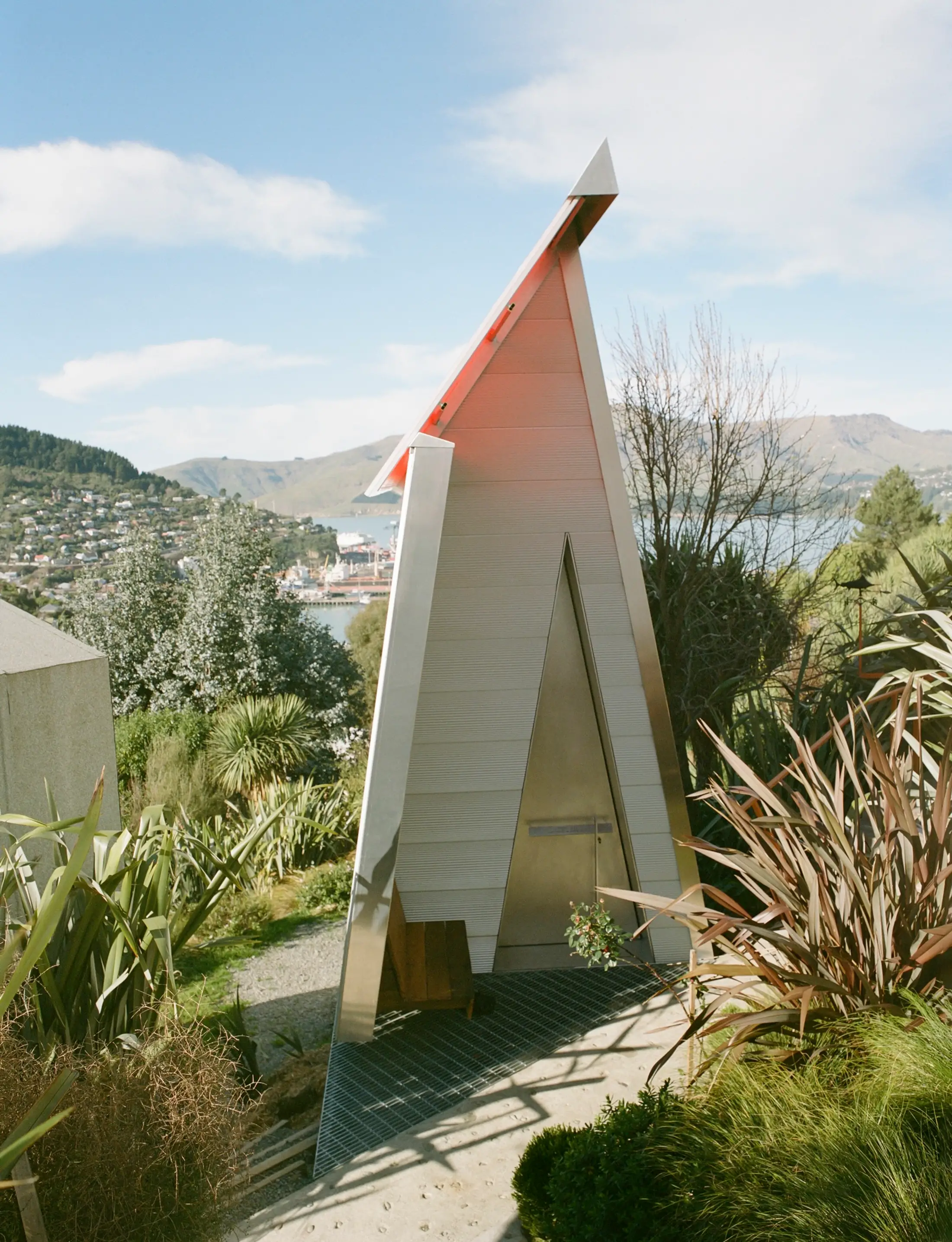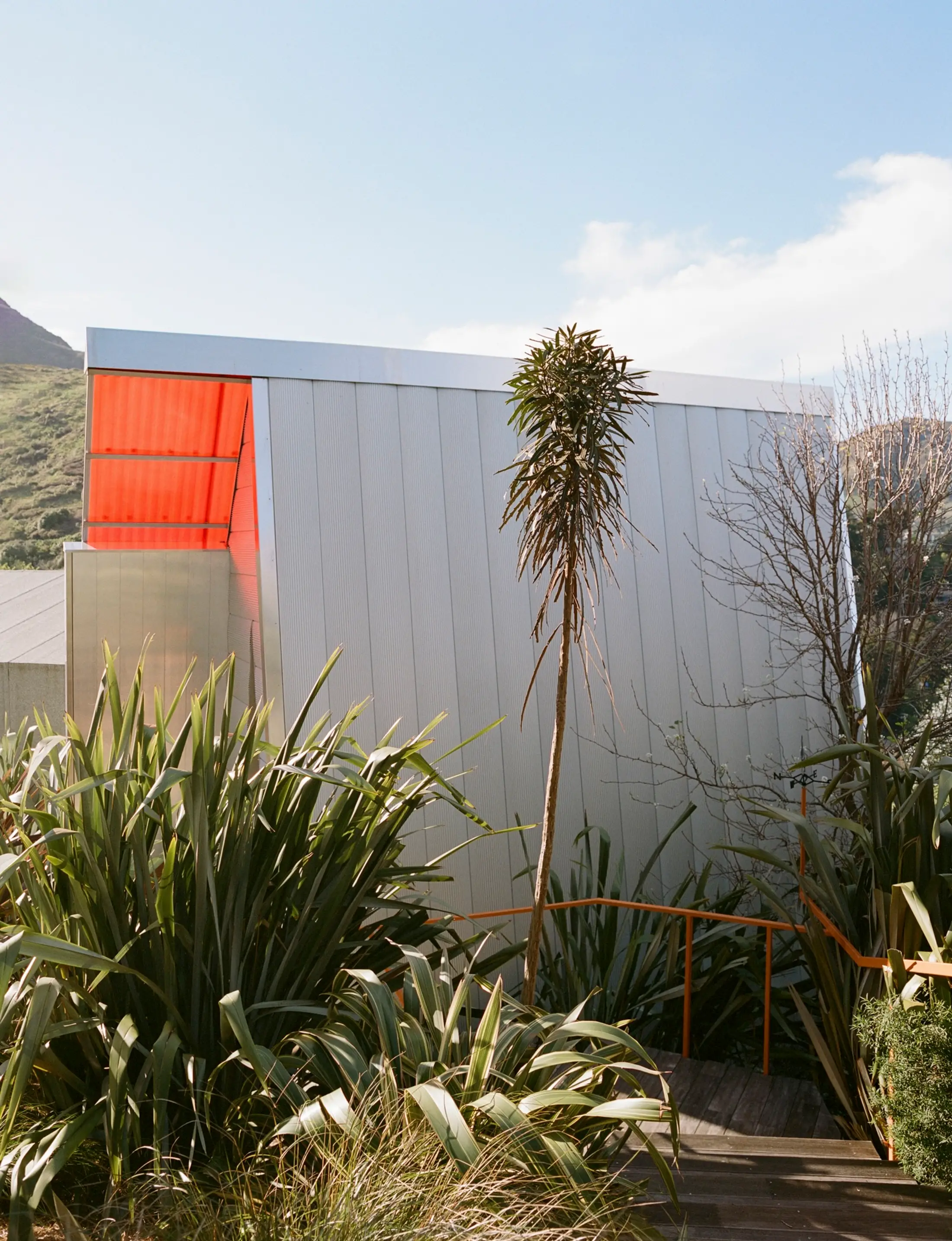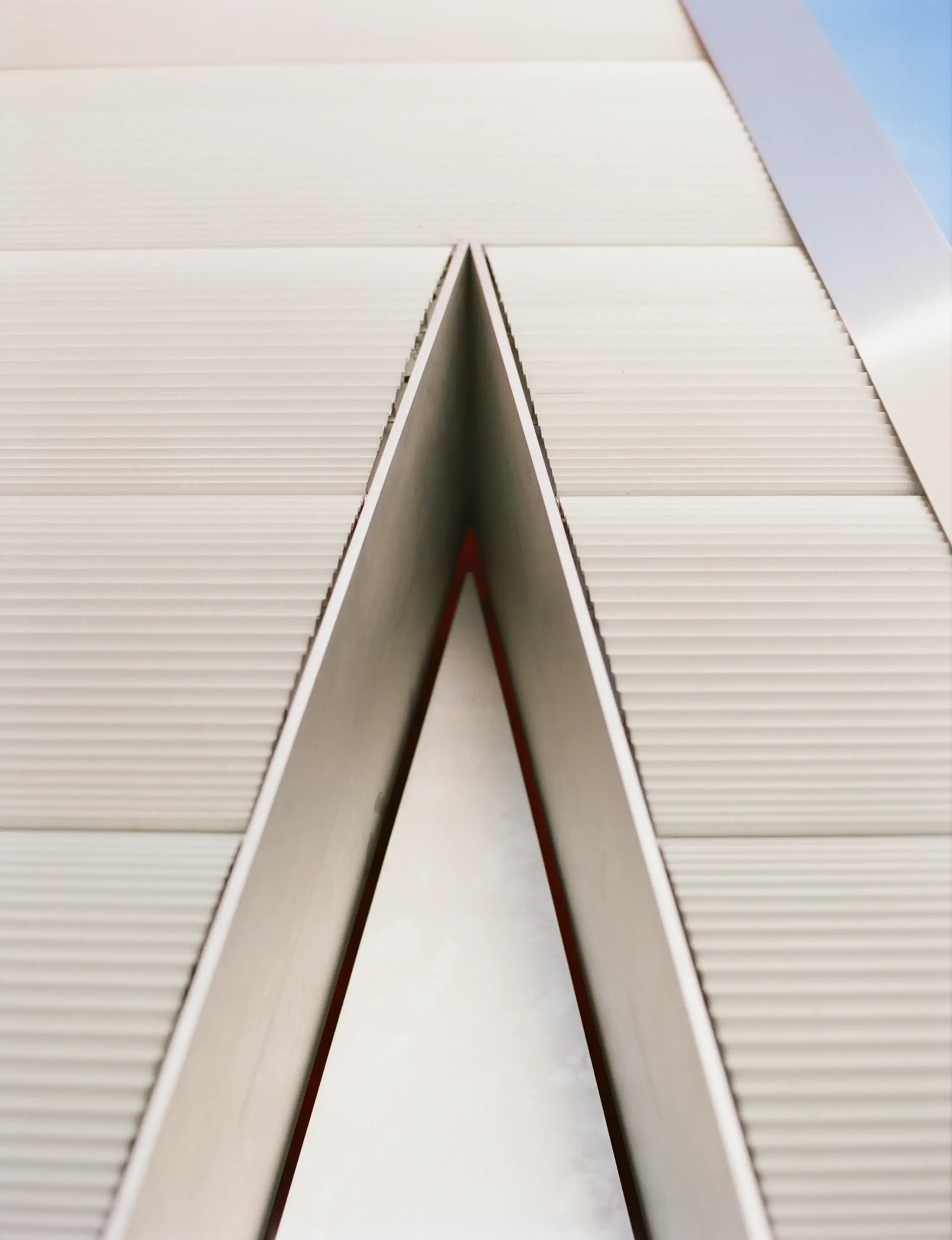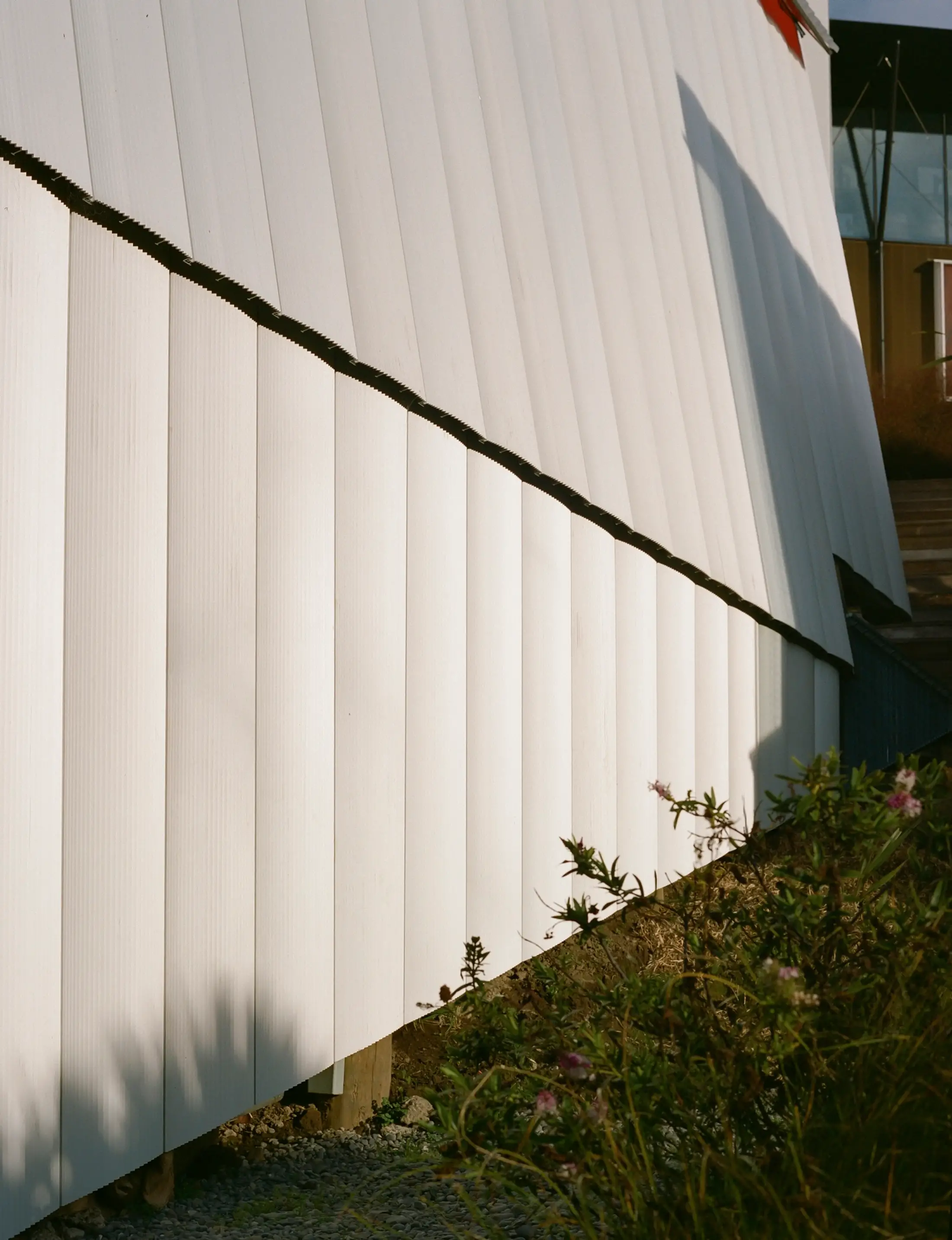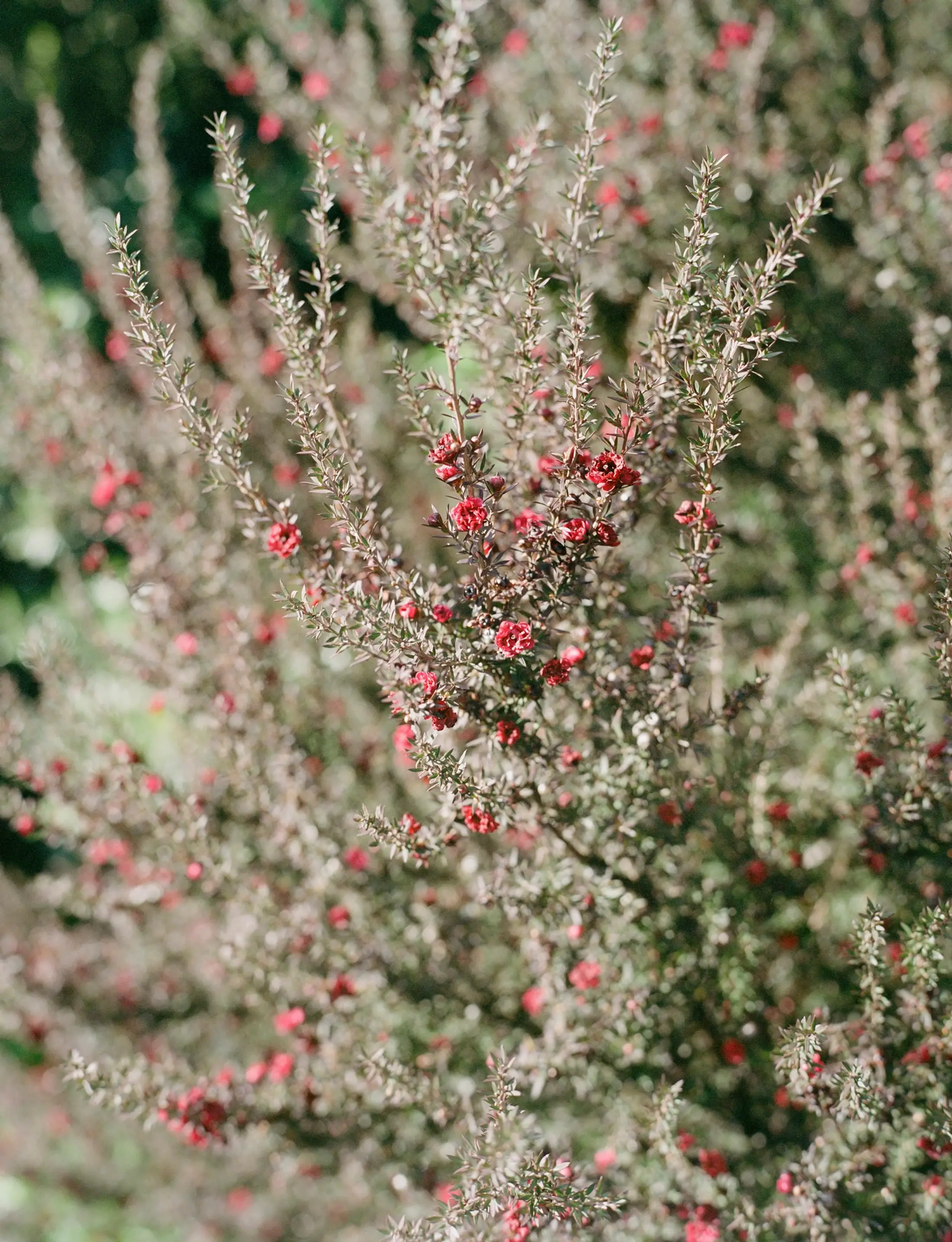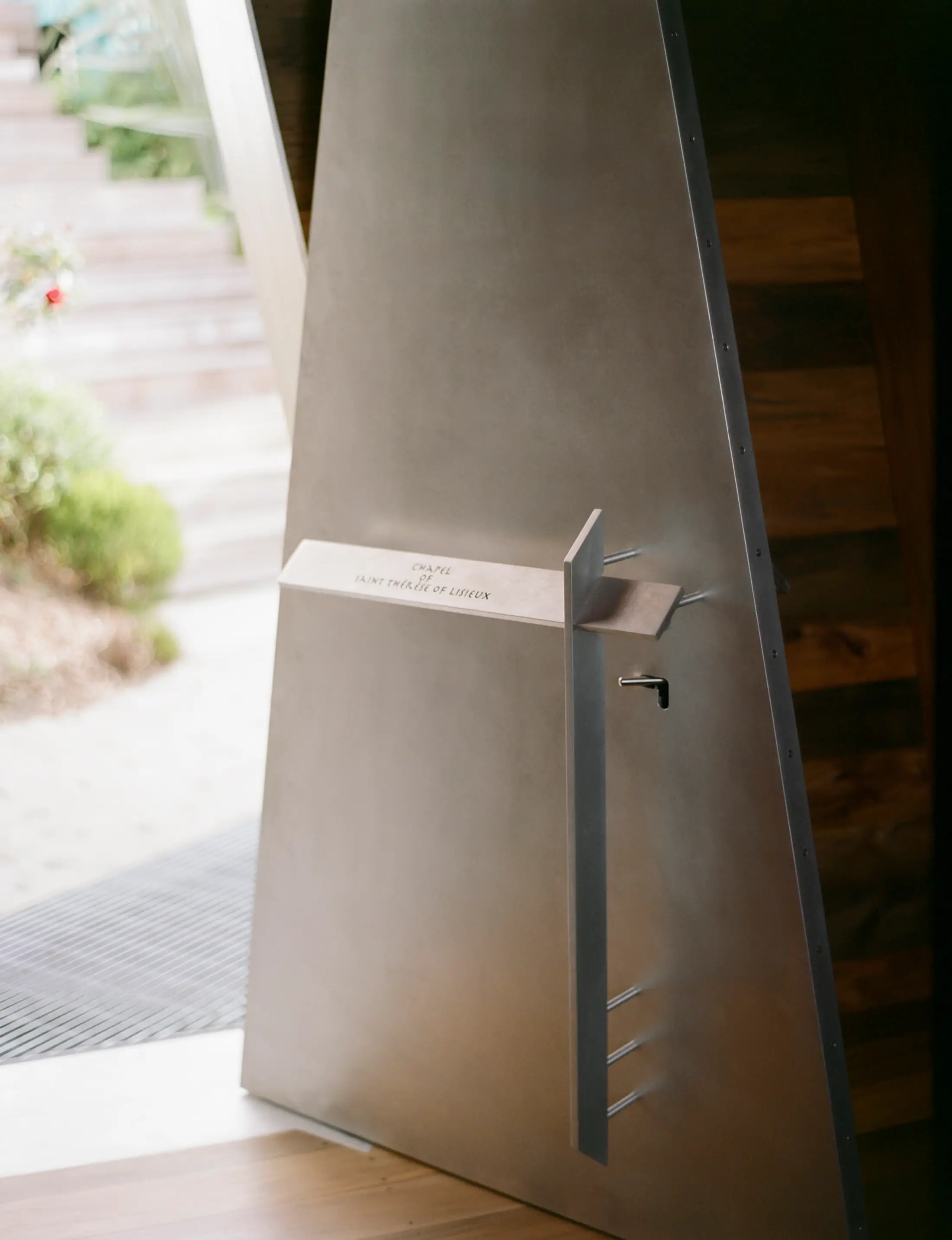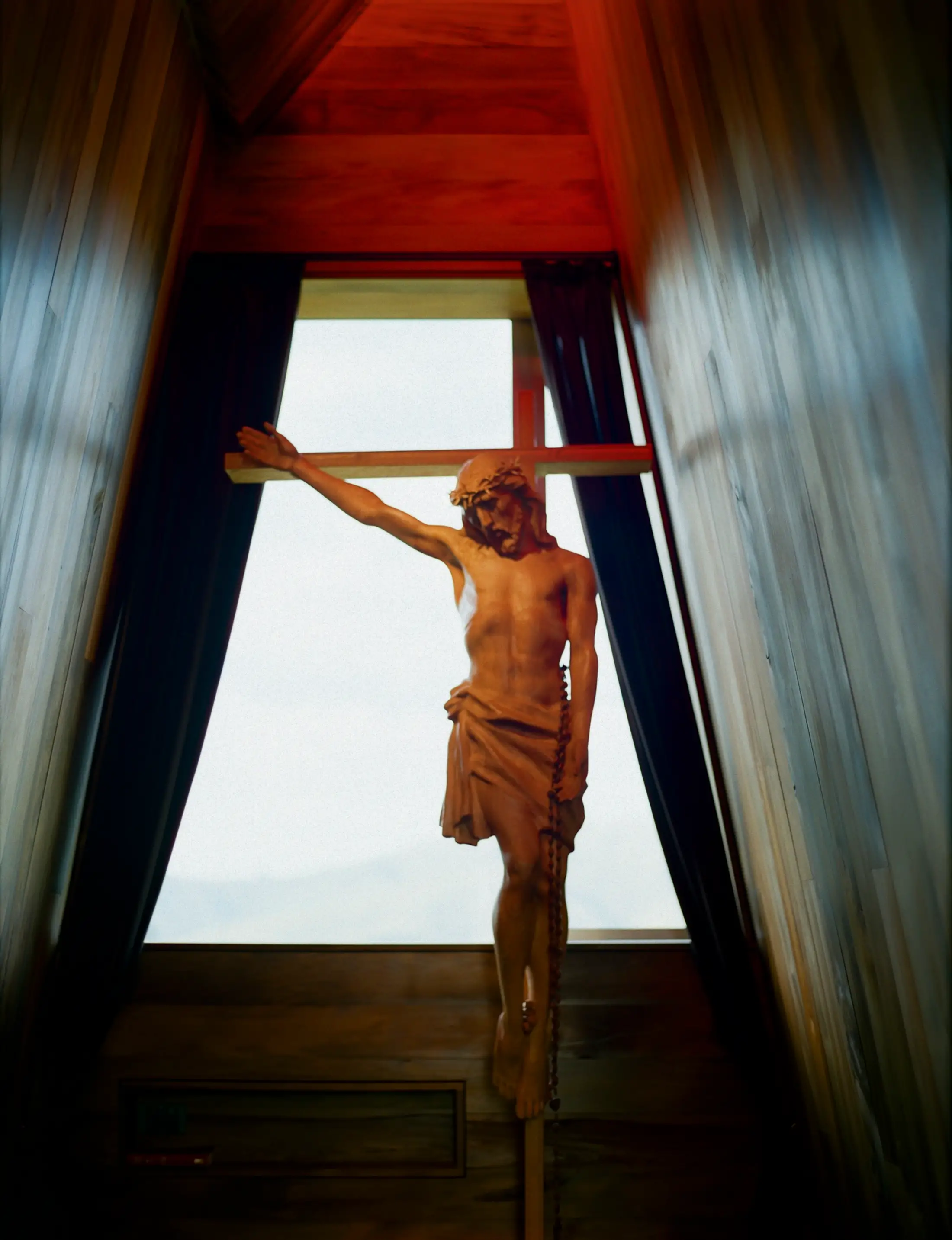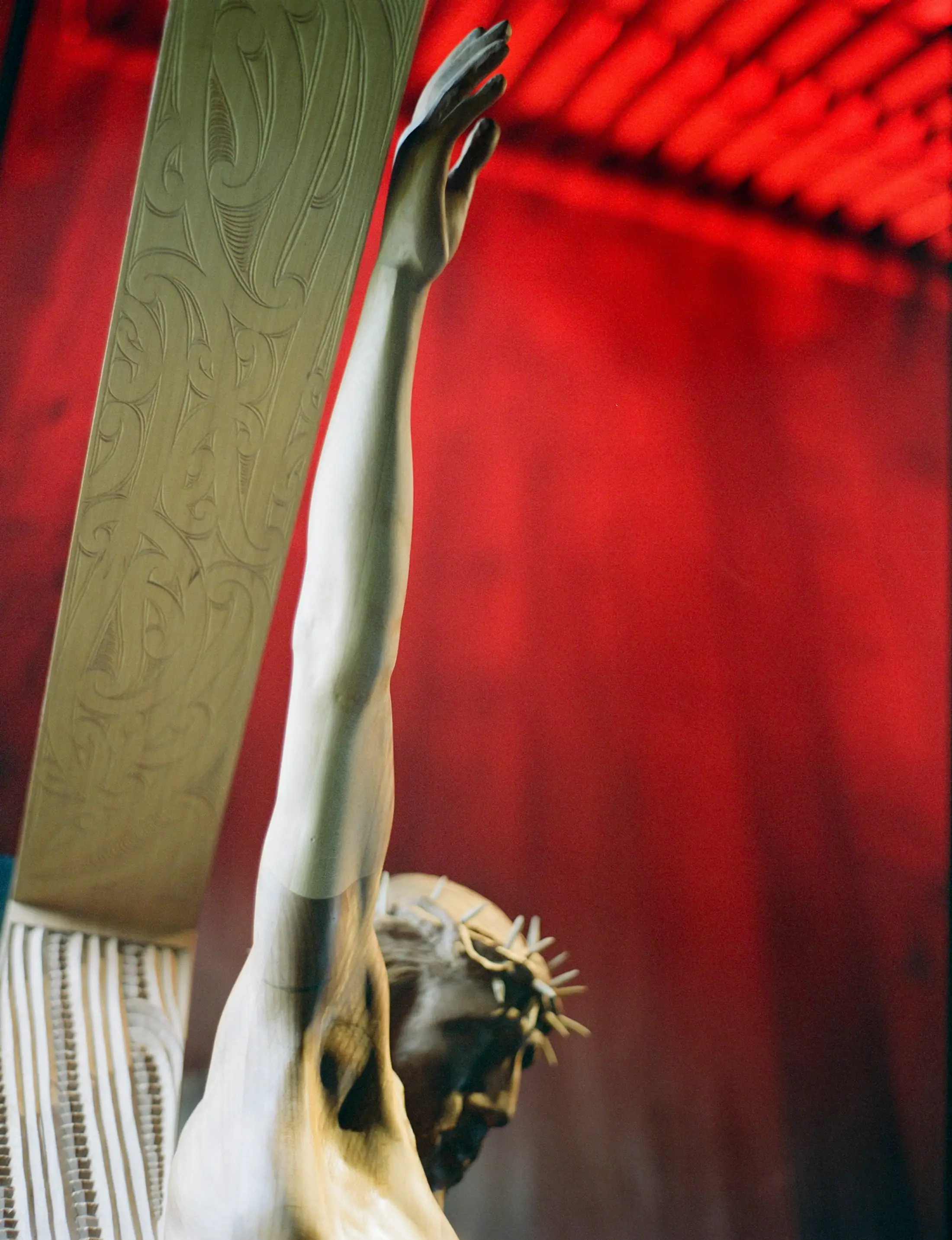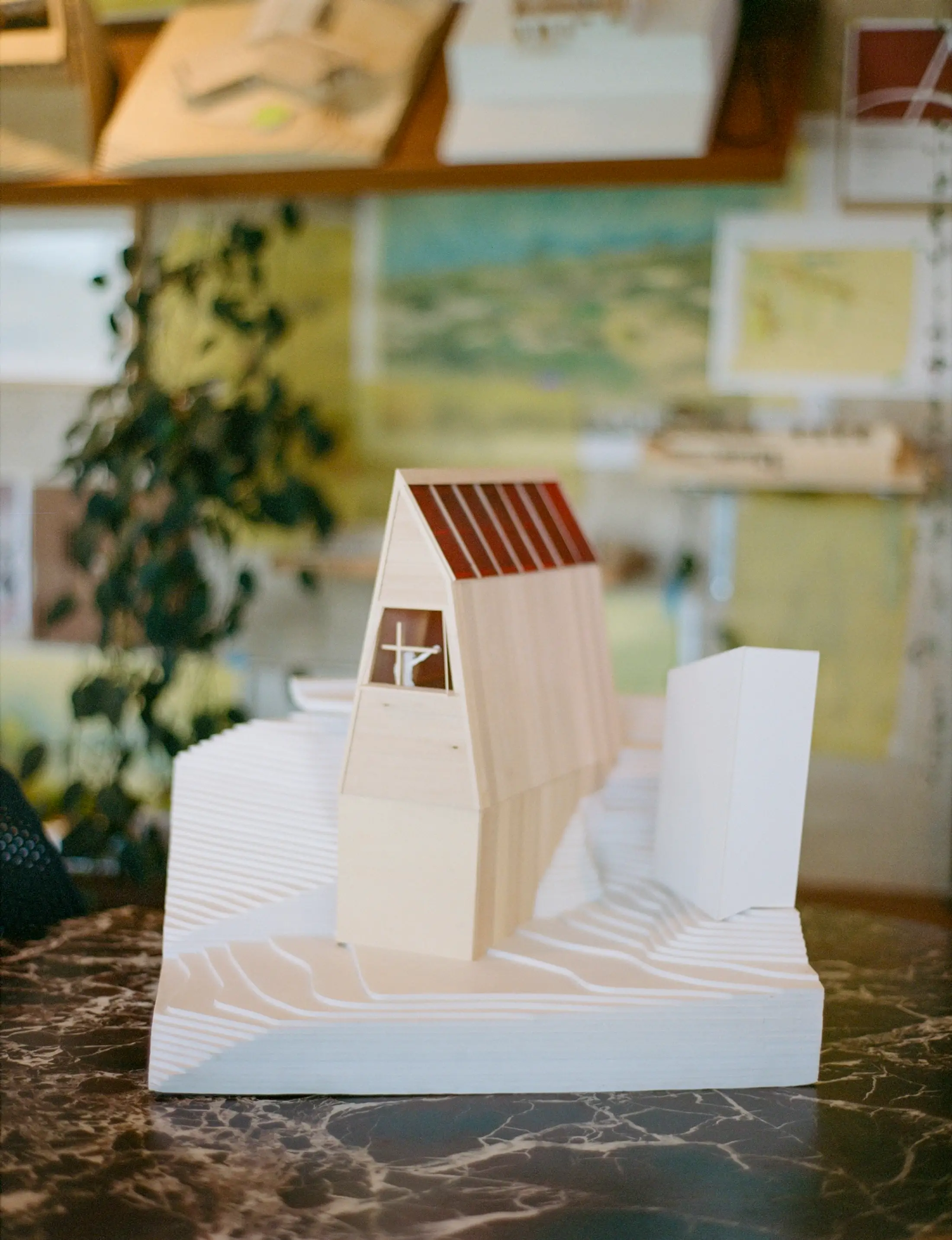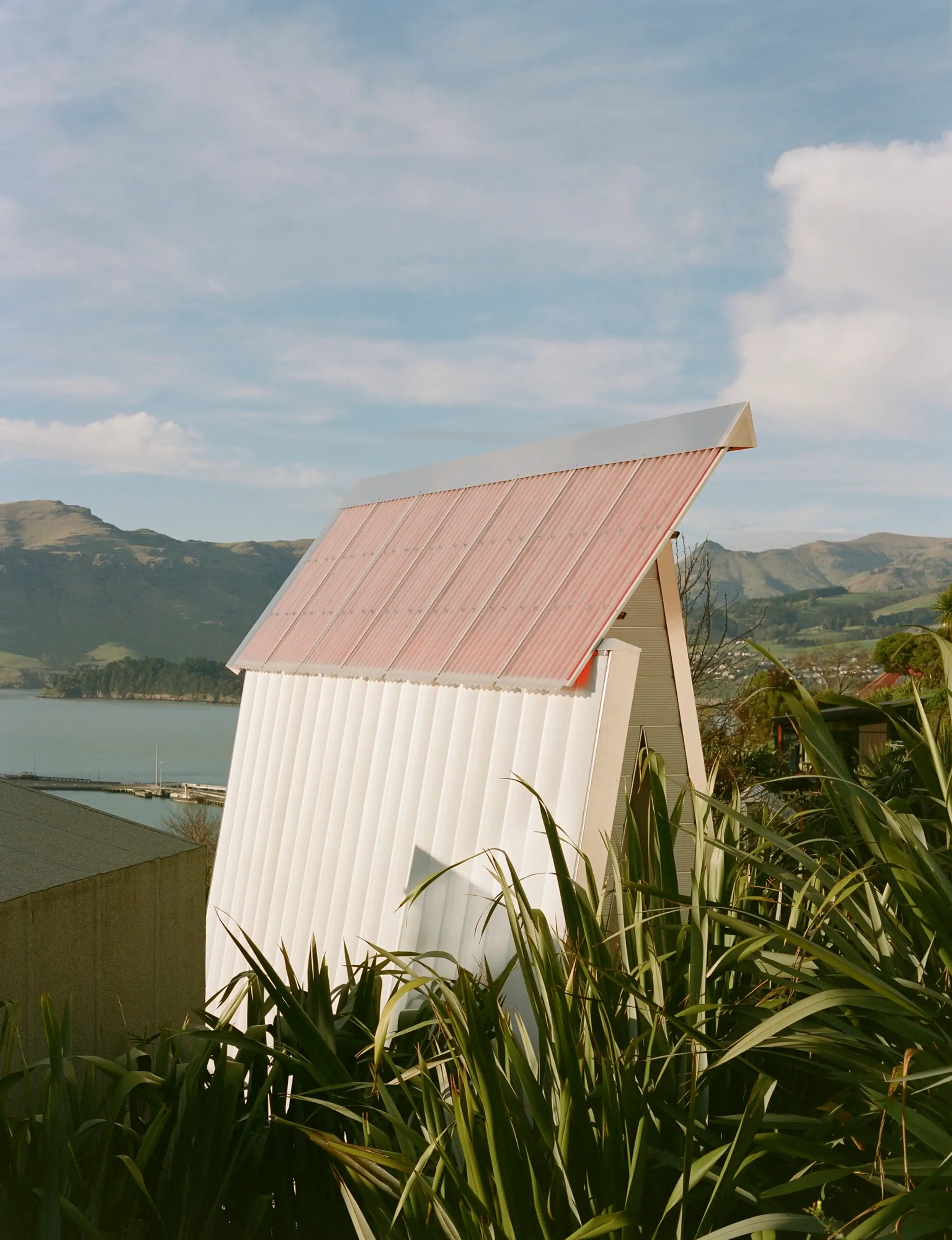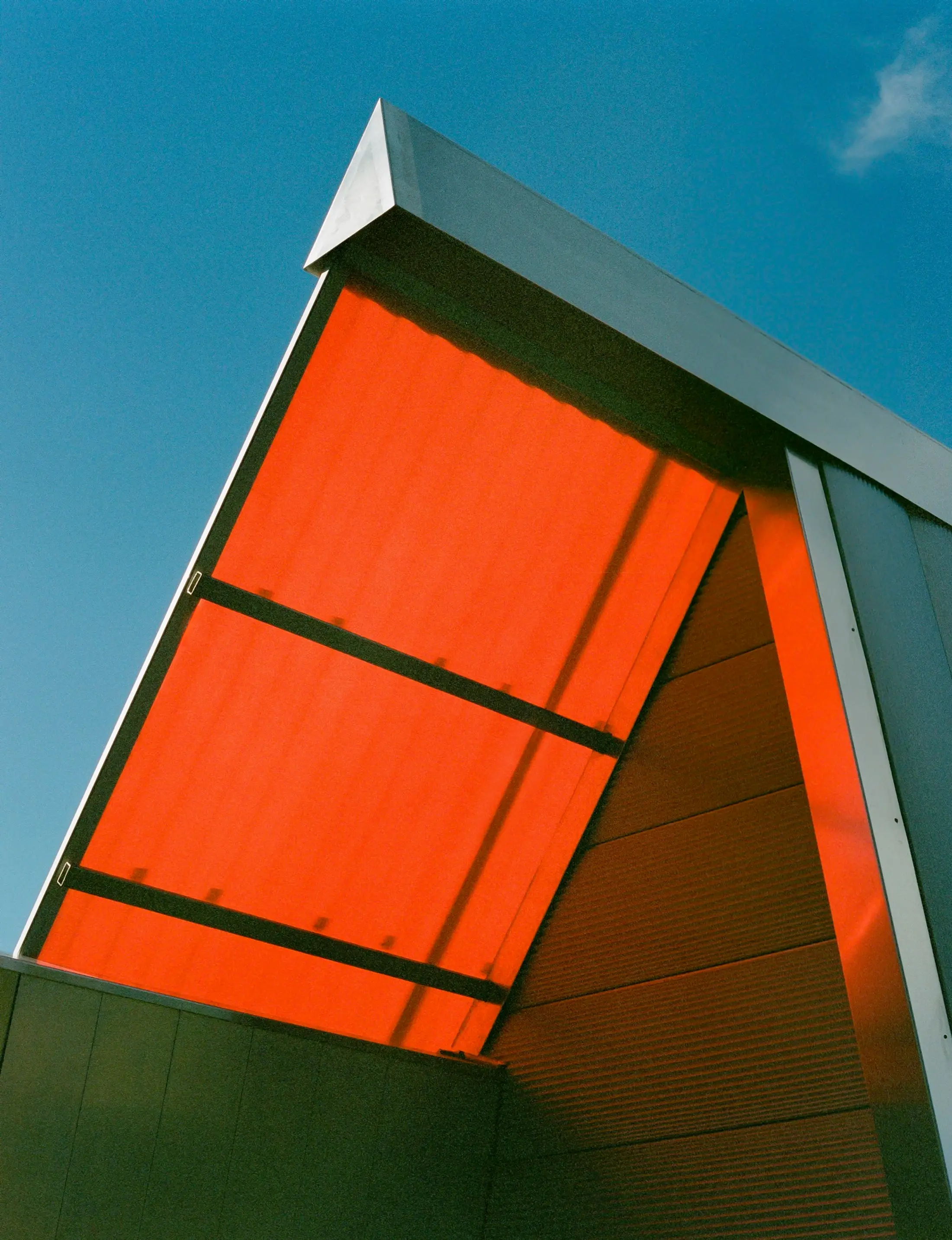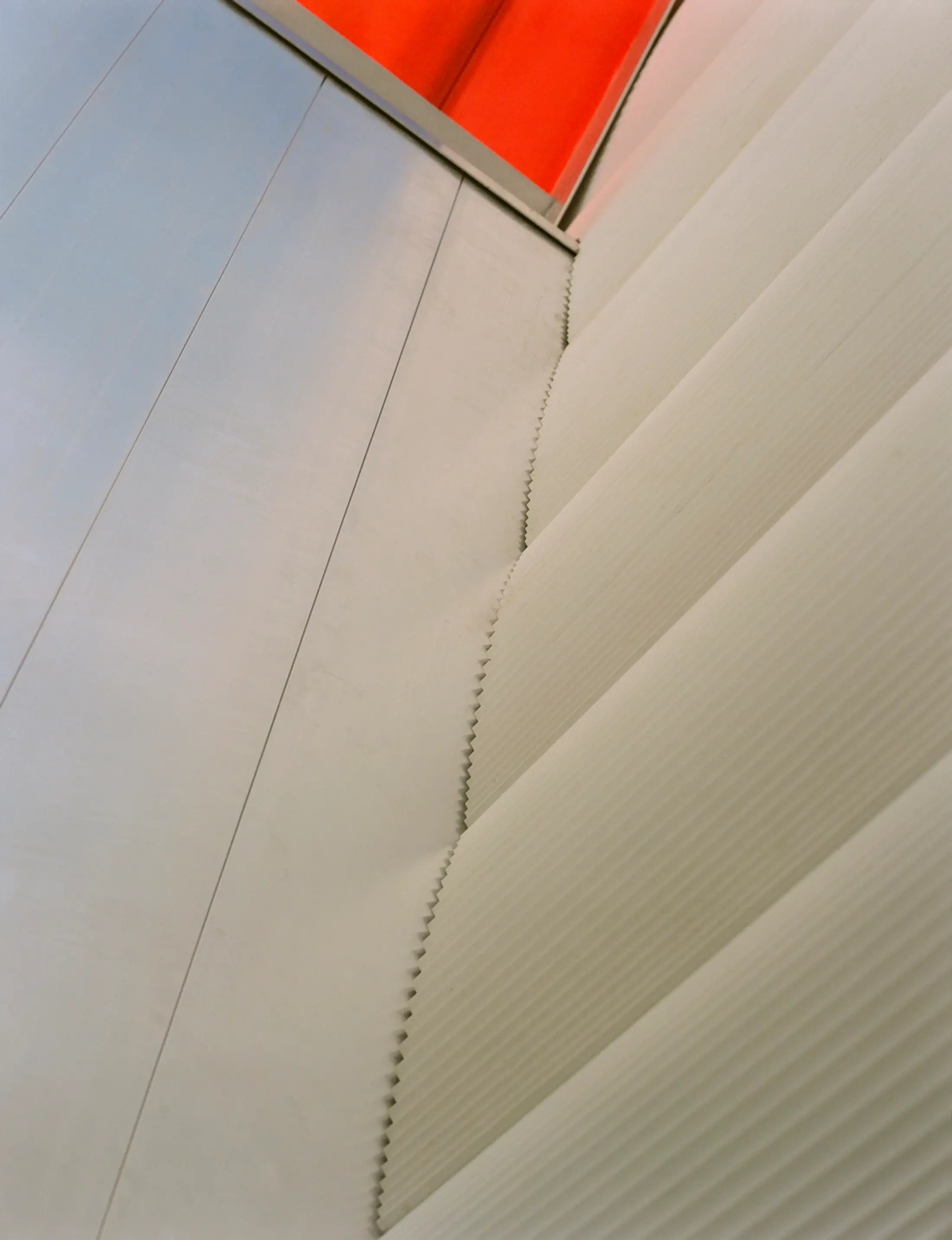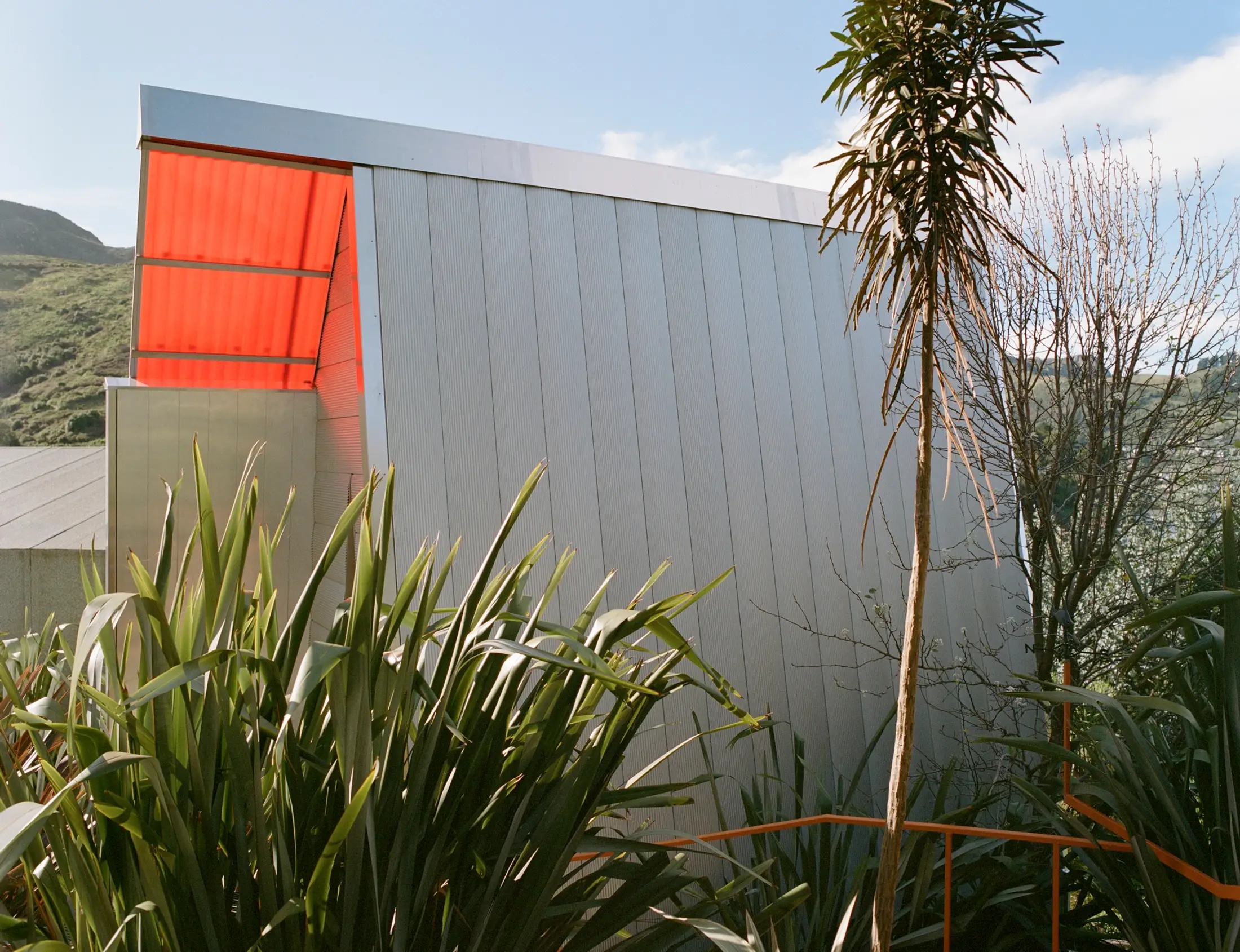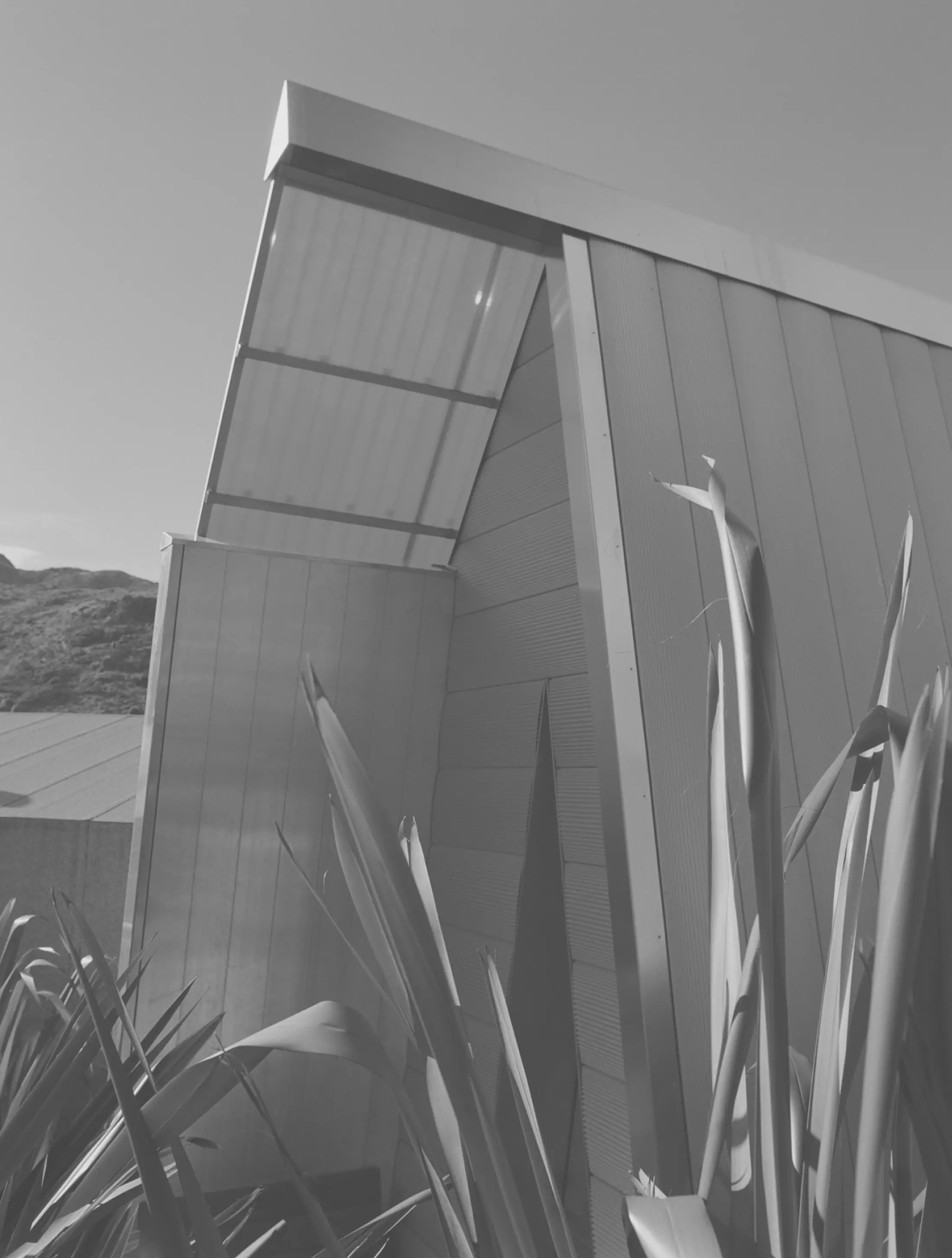
St Therese of Lisieux was conceived and constructed by Bull O’Sullivan Architecture with contributions from colleagues and friends.
The Chapel is aligned in a strong axial relationship to one of the most powerful sites in Lyttelton Harbour, Ripapa Island.
The triangular door is emblematic of the origins of life. Red light is filtered from above, for its multitude of religious and spiritual connotations.
This chapel borrows its name from the Carmelite nun affectionately known as The Little Flower, who lived a cloistered life of obscurity in the convent of Lisieux, France.
Thérèse of Lisieux developed a simple and humble approach to spiritual life called The Little Way, a path to holiness focused on performing small, ordinary acts with great love. The Little Way is a reflection on the joy of smallness. It’s not about grand gestures, but performing small, loving actions with great care and attention to detail rather than seeking the extraordinary.
This chapel is seventeen square meters. It’s orientated towards Ripapa Island in the Lyttelton Harbour, which used to be a jail housing some of New Zealand’s most celebrated Maori prophets.
There is a little seat for you to take your shoes off before you enter the space, and the door is a play on the Trinity, which is the father, the son and the Holy Spirit. Quite a ceremonial entry point into the space.
The exterior is clad with a specifically designed aluminium weatherboard that we have extruded in China and we have used on very select projects in this country. The interior is lined with a native timber called the rimu tree. This particular tree was extracted from a river in the south west of the South Island, and it is reputed to have been in that river for six hundred years, and before that was alive for a thousand.
There’s something quite beautiful about the idea that this tree came to fruition a few hundred years after Jesus Christ walked the planet.
The carpet that we are standing on is a beautiful one hundred percent New Zealand wool. Jesus and the cross are carved from heart Kauri that were rescued from an earthquake damaged warehouse in the inner city of Christchurch. They were the primary beams for the old building, repurposed to represent Jesus and the cross.
Jesus and the cross have been carved by a prominent New Zealand carver called Johnny Hauraki from Otaki. He’s a young man who has a clear, strong vision for how his work should be represented. The intention was to represent Jesus at the threshold of Christianity, which is the beginning of the resurrection. That’s why one arm is down.
The kneeler was made by Glenn Whatmough of the Smithery, and it too is also constructed from heart Kauri.
The chapel was blessed by the Catholic Bishop of Christchurch on the first day of October 2024, which is the celebration of Saint Thérèse of Lisieux. That bishop’s name is Michael Gelling, and it was a huge honour to have him acknowledge this intimate, beautiful little space dedicated to worship and prayer or simply showing gratitude.
It is a gift to the people of Christchurch from the O’Sullivan family, to show full appreciation for the architectural work received over the course of the rebuild of the city. Please come and enjoy it and respect it. God bless.
Michael O’Sullivan

